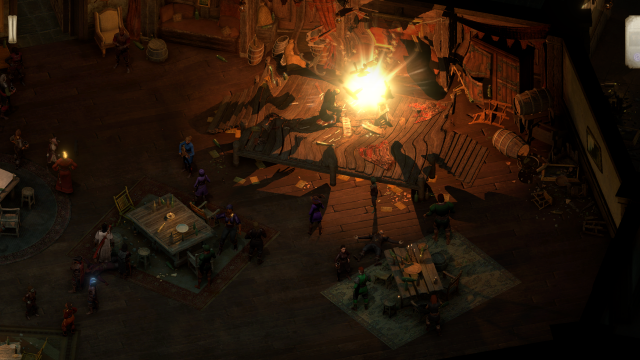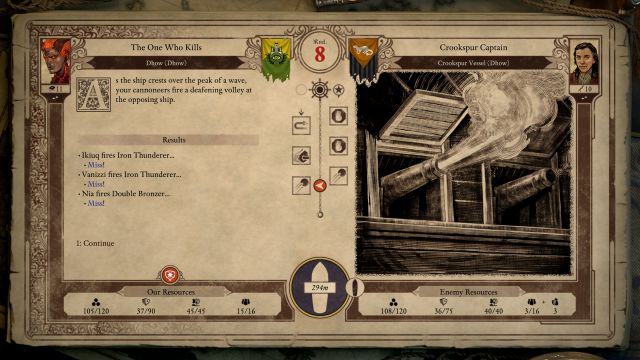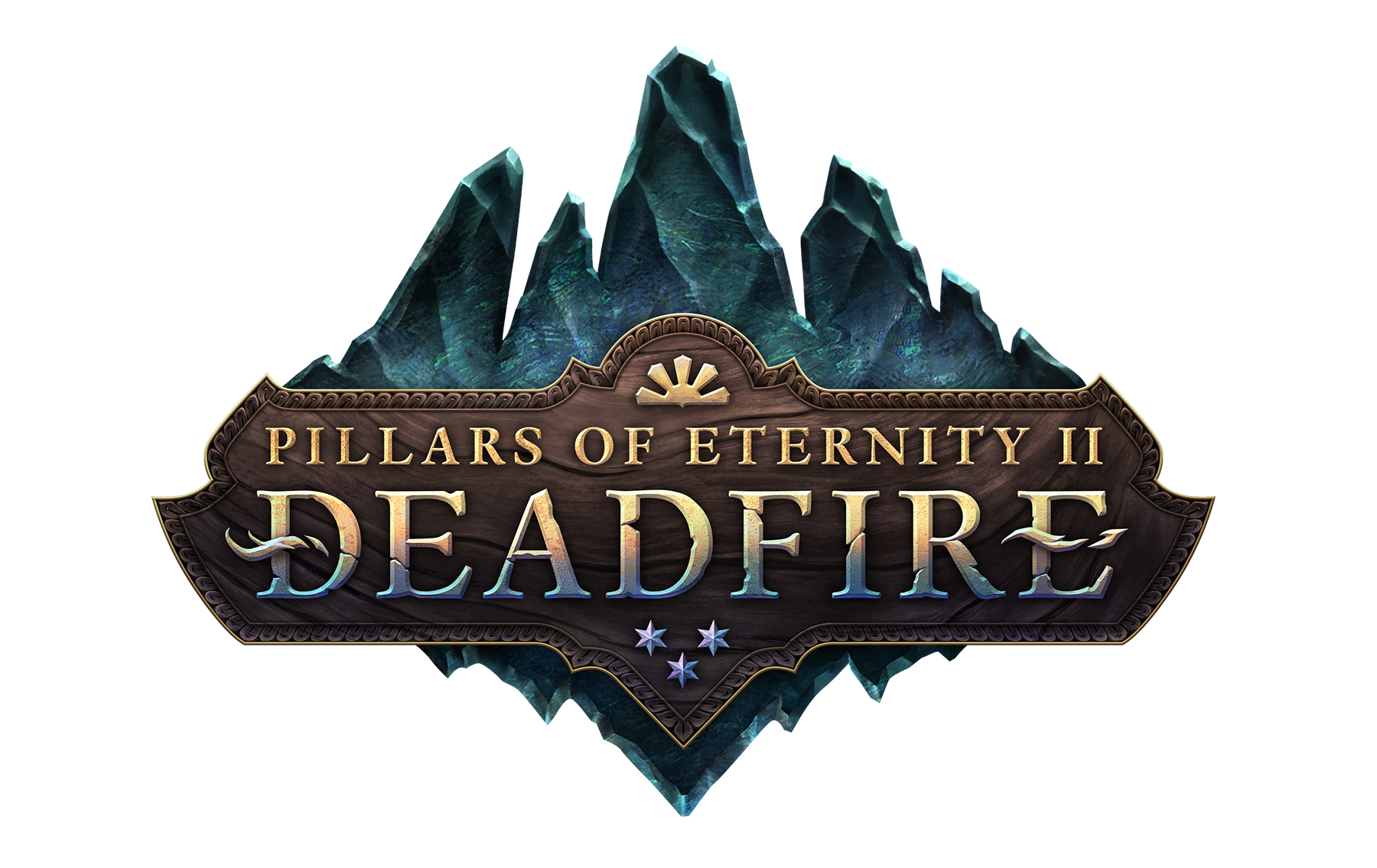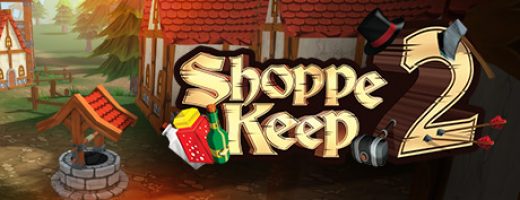Pillars of Eternity II: Deadfire Review
D&D: Pirates Edition
Obsidian Entertainment is known for developing RPGs such as Neverwinter Nights 2, Fallout: New Vegas, and South Park: The Stick of Truth. When it announced a brand new original franchise in the style of old Infinity Engine games, it generated both excitement and skepticism. Could Obsidian provide a good modern day spiritual successor to the classic D&D based PC games like Baldur’s Gate and Icewind Dale? After a very successful Kickstarter campaign, Pillars of Eternity was well received by both fans and critics. Pillars of Eternity II: Deadfire is exactly what one might expect from a sequel. While this entry is still deeply rooted in late 90s design philosophies, it does more than just play it safe. The new features are a mixed bag, but it’s clear from the start that this is not just a copy and paste of the first game. Those who choose to raise the anchor and lower the sails can prepare for fifty hours of swashbuckling, dungeon delving fun.
The journey begins with the soul of the Watcher, the protagonist, being summoned by Berath, the god of death. Eothas, the god of light, has taken the form of a huge stone golem, destroyed the Watcher’s castle, and is wrecking havoc in the Deadfire region for no apparent reason. Berath needs the Watcher to confront Eothas, discover his motive, and determine how to stop his rampage. Players have three important choices to make. First, the choice of combat mode: either the real time with pause option, or the new turn based option. Second, to create a body for the Watcher. Third, to choose a world state.
Character creation features the same races and classes from the first game. However, each class now has several distinct subclasses, and it is possible to combine two subclasses from different primary classes. Multi-classing is a great new feature, though it does have its pros and cons. The two classes are fused to form one new class, meaning that multi-class characters level up at the same rate, unlike the old RPGs where experience points were split between the classes. Having access to the abilities of both classes provides more tactical versatility, but there’s a catch: no additional skill points are provided and the highest level abilities cannot be accessed. As expected, some combinations are more viable than others. These characters will inherit the strengths and weaknesses of both classes, so it is important for players to fully understand how each stat works and to really study all of the abilities to create a viable build. The stat system is well designed, though it is important to play to a class’s strengths rather than trying to compensate for its weaknesses. For instance, a Mage with high Constitution and Resolve will still have low health and deflection. Instead, players should focus on Might, Dexterity, and Perception, as this will allow the Mage to cast more spells that deal more damage and have a higher chance of actually hitting.
The world state can be imported from a save file of the first game, can be custom made, or can be chosen from a list of six pre-made options. These world state options are based on fulfilling or breaking promises to the gods in the first game. This is something done at the player’s peril, best summed up by the potential to refuse Berath’s request to hunt Eothas in the game’s opening conversation, which will result in an immediate game over and credit roll. For a challenge, one can select the Everything Bad option, which means every bad choice from the first game, including betrayal of all the gods and death of all the recruitable NPCs.
An excellent feature of the Pillars of Eternity games is the ability to create any number of custom characters. Another great feature is the ability to import and export characters. This is fortunate because many of the pre-made and recruitable characters aren’t particularly strong. Sadly, this eliminates the humorous banter and meaningful interactions, as custom made characters have no personalities. Eder and Xoti have some very funny conversations and comments. Serafen gives new meaning to the phrase “swear like a sailor”. Pallegina and Maia represent opposing factions, so they tend to argue. Because of the variety of choices, companions, and character builds, the replay value is astounding. To further enhance additional playthroughs, there are achievements that unlock starting bonuses, such as additional gold or improved starting equipment.
After the somewhat lengthy prologue, the Watcher (and possibly Eder) are shipwrecked on a beach and must complete a few tasks for the locals before they will help repair the ship. From there, players set sail on a vast ocean dotted with islands to explore. Pillars of Eternity II does not attempt to reinvent the wheel in terms of quest design, but nor does it need to. Standard fetch and assassination quests are made interesting by the descriptive writing, excellent character design, and superb voice acting. Where the quest design truly shines is in the fact that most quests and scripted interactions can be completed in multiple ways. Athletics checks come up frequently in scripted interactions that involve climbing or swimming, but should players not have a character with a high enough Athletics skill to scale a cliff, they can use a grappling hook instead. Meanwhile, skills like Bluff, Diplomacy, and Intimidation can offer unique dialogue options to avoid hazardous encounters, while pickpocketing is a possible way to bypass an adversary with a key item that cannot be killed or reasoned with. Neketaka is the main city where players can barter, get quests, and resupply. It contains the headquarters of three of the main factions: the Huana, the Vailian Trading Company, and the Royal Deadfire Company. As part of the main questline, players are strongly encouraged to join one of these factions as their assistance is invaluable in reaching the final area of the game. However, each faction eventually wants the player to eliminate the others. It is also possible to join a group of cutthroat pirates or stay unattached.

Many quests have multiple solutions. One even lets players go full on Yosemite Sam by planting a bomb inside a harpsichord.
The standard combat is real time strategy with the option to pause and issue orders. For instance, if the front line Fighter is injured, players can pause, select the Priest, choose a healing ability with the Fighter as the target, then unpause. Enemy targets can be chosen and attacked in a similar fashion. Simply click a party member, then pick an enemy, and they will begin attacking. Engagement represents the ability to keep a target occupied. It happens automatically when a target comes into melee range. Not only does it cease movement, but attempting to move away while engaged causes a disengagement attack. If an engaged target is attacked by additional enemies, they become flanked, which lowers deflection, making them easier to hit. The dexterity stat and armor affect action speed. Armor is the main source of damage reduction in the event that an attack hits. A post-launch update also added a turn-based mode. In this mode, each character gets to act once per round while initiative replaces action speed and determines turn order. In both modes, health and per encounter abilities are replenished when combat ends. The combat follows the standard cRPG template, but is well executed and enjoyable.
One of the improvements from the first game is that skill checks now take into account the combined points of all party members. This helps immensely with the Mechanics skill in particular, which is used for picking locks and disarming traps. Another change is the injury system. When a party member is reduced to zero health during a fight, they are knocked out and unable to act until it ends. At the end of combat, knocked out characters wake up. Whenever a character is knocked out in combat, fails an Athletics check in scripted interactions, or gets hit by a trap (among other things), they sustain an injury. An injured character has a penalty to some of their stats and should a character have three injuries, picking up a fourth will kill them. Characters must now eat during a rest to cure injuries, but resting no longer requires camping supplies. The regular difficulty can be punishing to those unfamiliar with the genre, but there is a level scaling option to raise or lower enemy level to match the party’s, while overall difficulty setting can be adjusted anytime. For those in search of a greater challenge, the Expert Mode option will remove helpful pieces of information, like how high a skill has to be to successfully pull off a skill check or the impact a choice will have on reputation.
Rather than a castle like in the first game, Pillars of Eternity II: Deadfire gives players a customizable ship as their headquarters. This new ocean traversal system can become frustrating in two specific ways: one is that players must constantly stock up on supplies to maintain the ship and crew, the other is that enemy ships can randomly show up to attack the player. Various choices have an impact on morale, though it isn’t hard to keep it up. The randomized encounters at sea start out as scripted interactions in which the player can choose to run from, fight, or board the enemy ship. Running immediately hurts crew morale and that ship can reappear a few minutes later to attack again. Choosing the option to board the enemy ship skips over the sea combat, but guarantees damage to the ship and injuries to the crew. Choosing to fight initiates a scripted interaction that is long and tedious, and often results in boarding the enemy ship anyway. There is no direct control or vision over the sea battles, which play out as text-based encounters with various options to choose from. Enemy ships tend to have more health, higher accuracy, and higher damage, and even using a well-equipped ship, misses are frequent and damage is low. Meanwhile, should the player’s ship’s hull health reach zero, it’s game over. The best option is to just board the enemy ship, which results in a standard battle taking place, or upgrade the ship to make it faster to avoid these encounters entirely. Unfortunately, ship upgrades are extremely expensive and have minimal impact on stats. In the end, the entire naval battle system feels like a missed opportunity.

These cannons couldn’t hit the broad side of a barn. All the nuances of naval combat reduced to a series of virtual dice rolls.
Pillars of Eternity II: Deadfire goes all in on the pirate theme, which extends to art and sound design. Sabers, flintlock pistols, leather armor, and tricorne hats are in abundance. Gunshots, cannon fire, crashing waves, and seagulls all sound the way they should. The tropical climate is varied, with a good mix of beaches, deserts, jungles, caves, temples, and even a volcanic area, so it doesn’t get stale. The soundtrack is appropriate for the setting, though not particularly memorable or unique. The beautiful artwork looks amazing with modern lighting and shadows, reflections, antialiasing, and anisotropic filtering.
The formula may seem familiar, but this series has so much to offer over its ancestors, and this sequel features many gameplay and graphical improvements over the first game. That having been said, the characters and story aren’t as compelling this time around, while the ending fails to give players much control over the outcome. The constant ship and crew management along with the underwhelming ship-to-ship combat and somewhat punishing difficulty had a bad habit of breaking the immersion. Those with an appreciation for the tabletop games and classic PC games this pays homage to will likely have an enjoyable experience. The learning curve is a bit steep, the seas may get choppy, and the deck can get rather slippery, but with some patience and perseverance, even the greenest sailor can go from lowly deckhand to decorated captain.


Improves upon the first game in significant ways
Ocean battles can be annoying, difficult, and tedious
New injury system can lead to permadeath
Steep learning curve








Recent Comments